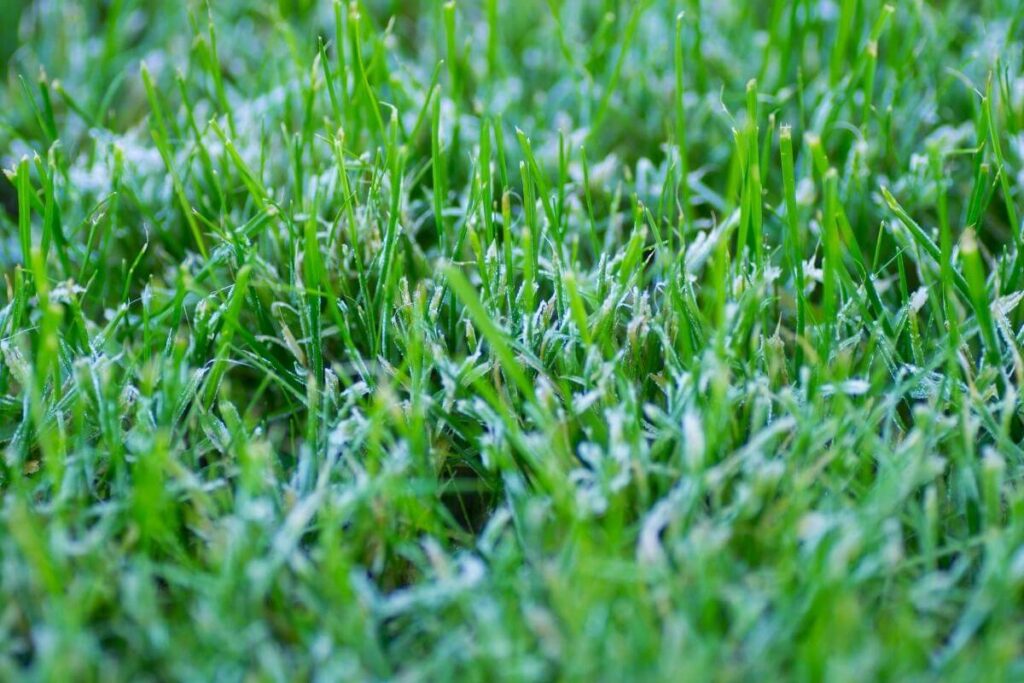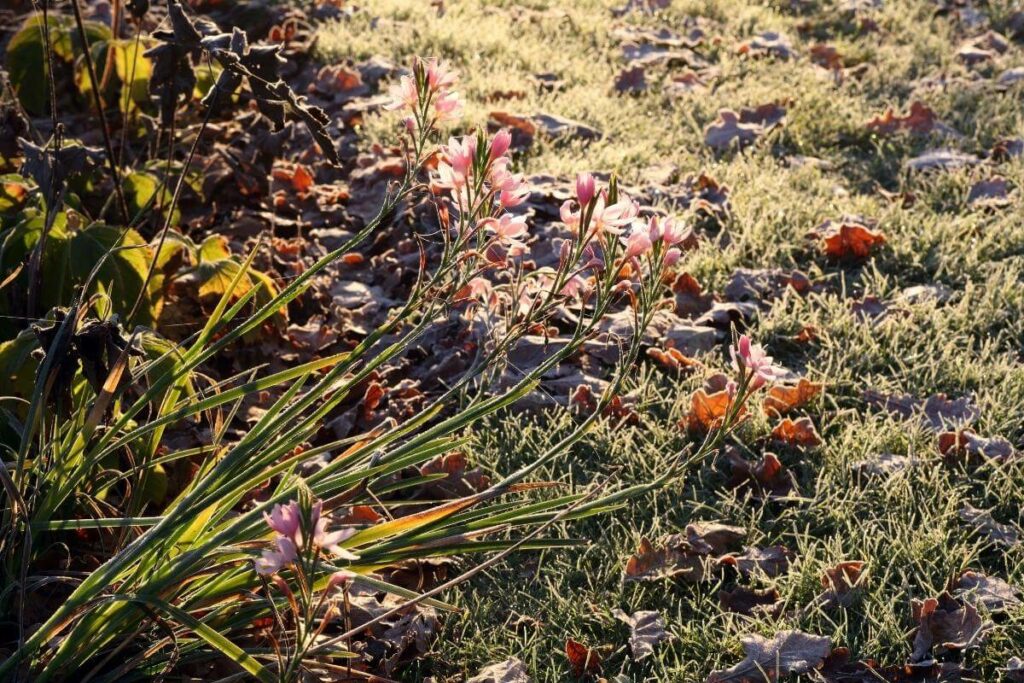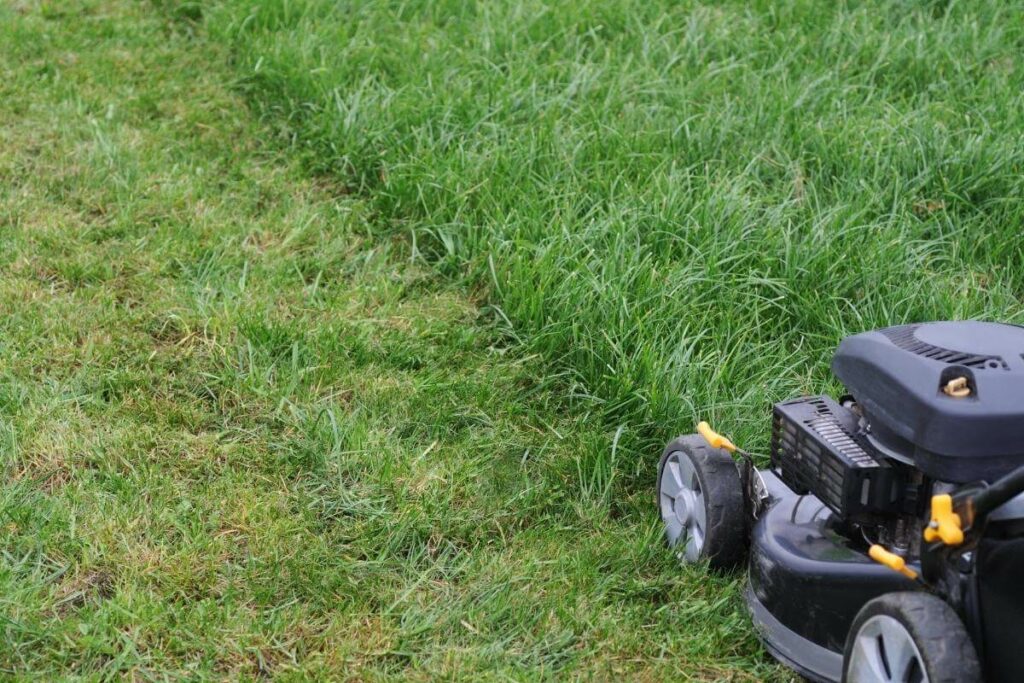Most people neglect their lawns throughout the winter months.
Some even believe there is no need to trim the yard since the grass falls into dormancy when the temperatures drop.
However, the grass does not cease growing; instead, the growth rate is slowed.
Hence, lawns will require a certain level of care throughout the winter, however, with more caution.
Ideally, you should mow your lawn every 3-4 weeks during winter. However, this will largely depend on your region. Grass normally stops growing when the temperatures drop to around 40-50 degrees Fahrenheit. Therefore, if you live in extremely cold areas like Minnesota, mowing your lawn during winter shouldn’t be a concern.
Factors Affecting Mowing Frequency in Winter
| Factors Affecting Mowing Frequency In Winter | How Often To Mow? |
|---|---|
| When last did you fertilize your lawn? | Avoid mowing immediately after fertilizing your lawn. |
| Type of grass | Cool-season grasses thrive best in the cold – wait for the ice to melt to mow. Warm-season grasses go into dormancy in winter; therefore, mowing isn’t necessary. |
| How fast your lawn grows? | Most lawns enter a semi-dormant state during winter. However, if that is not the case with yours, try mowing every 3-4 weeks. |
| Temperature and region | Avoid mowing if there is snow and ice. |
| Height of grass | You can mow if the grass blades are longer than 6cm but under the right weather conditions |
When Was The Last Time You Fertilized?
To have the greenest and healthiest lawn possible, it is essential to understand when and under what conditions to trim the grass, mainly if you use fertilizer on your lawn.
Fertilizers provide your grass with nitrogen, which helps it stay green, as well as trace amounts of other nutrients.
Winter fertilizer is often administered before the first frost. This winter fertilizer will replenish the lawn’s nutrients lost during the warm months and nourish the roots throughout this period.
Mowing after winter fertilizer might impair root development throughout the winter months.
Furthermore, some lawnmowers include a grass catcher that operates like a vacuum and suckers up the fertilizer before it can dissolve into the soil, preventing the plant from benefitting from the nutrients provided.
The Type of Grass You Are Growing

Lawn mowing frequency depends on the type of grass and how fast it grows.
Cool Season Grass
They are used throughout the North and thrive best in temperatures between 50- and 80-degrees F during fall and spring.
They stay vibrant green even when covered in the snow or frost for an extended period and survive subfreezing temperatures.
Therefore, under the right conditions (no ice or snow), you should mow it regularly to promote healthy growth.
Watch Out: Never mow your lawn when it is wet and frosty, as this can damage the turf and compact your soil.
Warm-season Grass
This grass grows fastest in a hot climate, preferring temperatures between 80 to 90 degrees F, and is commonly used in lawns in the south.
Even under hot weather, it can still grow and display its lush green color.
However, they lose their green color once the winter temperatures drop below 50 degrees F and will turn into a straw color and go into dormancy; thus, mowing won’t be necessary.
Examine the kind of grass you have by checking the blade’s shape, width, and type of blade tips. Some grow below-ground stems, while others grow above-ground stems or both.
How Fast Your Lawn Grows in Winter?

Northern (cool-season) grasses, like those cultivated in Northeastern Ohio, become dormant when the soil temperature falls below 40 to 45 degrees Fahrenheit.
In contrast, warm weather grasses do so when the temperature drops below 50 to 55 degrees. In a dormant state, the grass reduces its metabolic activity, allowing it to conserve more energy.
The frequency with which you must mow your lawn is determined by how rapidly the grass grows.
They don’t cease growing entirely; most winter growth in a grass bed is insignificant.
Hence, you won’t have to mow during winter unless the grass grows too long and when weather conditions are right.
Temperatures And Region You Live In
Long grass should not be chopped down if you reside in an area where snow and frost are expected.
They often have leaves at the top of the plant and need these to stay healthy throughout the winter.
Mowing them short will result in the removal of these leaves, leaving only grass stalks. Furthermore, in the cold, grass takes a long time to develop new leaves.
Things to avoid:
- You should avoid mowing if there is significant moisture from snow and ice, as well as cold temperatures.
- Pushing large equipment over frozen grass may cause the grass blades to shatter, causing damage to the lawn.
However, once the snow has melted, you can begin mowing if the grass is tall.
Again, the temperature has a significant influence on the frequency of mowing. When the temperature goes below 40 degrees Fahrenheit, the grass will not grow tall enough to require regular mowing.
In warmer winters, mowing your lawn will do no damage. It may be incorporated into your winter lawn care routine, but approach with caution. Set the lawnmower blades higher than usual to only cut one-third of the top of the grass. If you trim the lawn too short, you will scalp it and weaken it.
Height of The Grass
Assume you reside in an area where frost and snow are not as severe and only seen on rare occasions.

In this situation, you may need to mow your grass regularly over the winter to maintain a healthy blade height. A light, a high cut can keep the grass looking good.
During the winter, you only need to mow your grass every 3 to 4 weeks. This will vary based on the type of turf you have.
While it’s recommended that you keep your grass longer, make sure it does not become overgrown. Alternatively, you can mow your lawn when the grass blades are longer than 6 cm.
Length is essential for most cool-season turfs, including the well-known Kentucky bluegrass. Bermuda and bent grass types should have shorter sizes (approximately 1 inch to 2 inches).
Having 2-3 inches permits your grass to maximize its photosynthesis and retain resilience during the harsh winter months.
Excellent Advice: While you will not need to mow as frequently as during the summer, it is still vital to stick to your mowing plan. This will aid in the maintenance of a regular growth pattern, allowing your lawn to enter the warmer months in great shape.
Final Thoughts
Lawn maintenance is still required even in lower temperatures, and grasses still require adequate attention and care since they grow slower when temperatures go below 50 degrees F, depending on the type of grass in your lawn.
If you need to cut your lawn in winter, raise the cutting blade slightly higher than usual, although lawn mowing in winter isn’t necessary and is highly discouraged.
Furthermore, after heavy rain, attempting to run a lawnmower over a combination of muddy soil and wet grass blades damage your lawn.
Also Helpful
- Is it Worth Paying for Lawn Care?
- How to Revive a Lawn After Scarifying
- Lawn Care vs Lawn Maintenance: What’s the Difference?